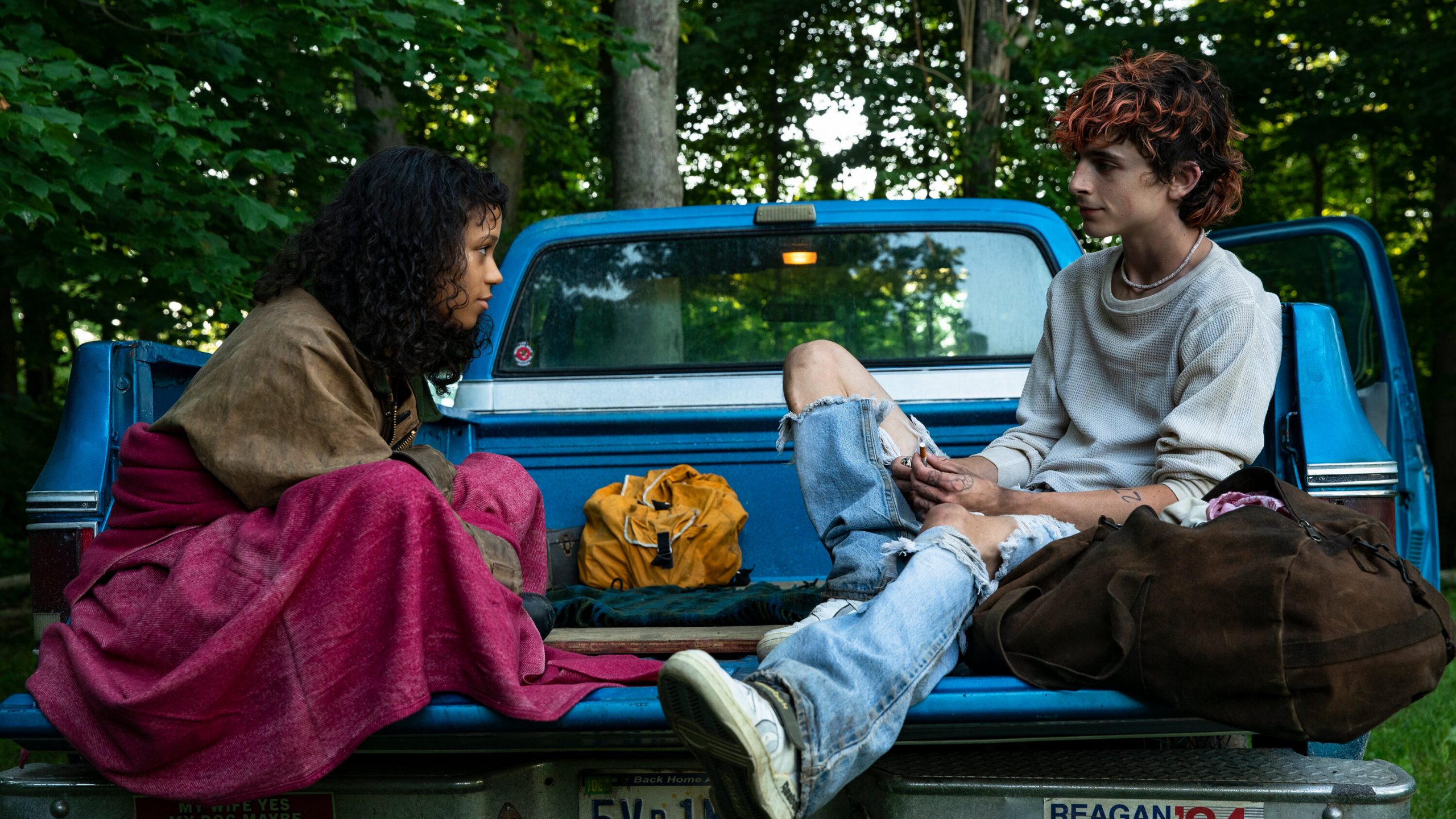Bones and All, directed by Luca Guadagnino, is a unique film that blends romance, horror, and coming-of-age drama into a story that is both unsettling and emotionally resonant. The film follows Maren (Taylor Russell), a young woman struggling with uncontrollable cannibalistic urges. Abandoned by her father at a young age because he feared her monstrous nature, Maren embarks on a journey to find her mother, whom she has not seen since infancy.
Along the way, she discovers that she is not alone in her condition. The world contains other “eaters,” people who share her compulsions and from whom she can learn how to navigate her dark urges. Two pivotal figures she encounters are Sully (Mark Rylance), a menacing and mysterious character, and Lee (Timothée Chalamet), a kindred spirit with whom she develops a deep emotional and romantic connection.
Luca Guadagnino, known for Call Me by Your Name and the 2018 remake of Suspiria, has a reputation for exploring unconventional love stories set in visually striking and emotionally intense environments. In Bones and All, Guadagnino takes the unusual concept of a cannibal love story and turns it into a poignant exploration of intimacy, longing, and self-acceptance. The combination of romance and horror may seem unsettling, but the film emphasizes the emotional connection between Maren and Lee, creating a balance between terror and tenderness. The story is as much about love and human connection as it is about survival and identity.
The Emotional Climax Highlights Love, Morality, And Maren’s Struggle With Her Nature
The emotional climax of the film occurs when Maren and Lee, having built a small life together, are confronted by Sully, who is angry and jealous that Maren left him years earlier. Sully breaks into their apartment and threatens her. Lee intervenes to protect her but is fatally stabbed in the lung. In his final moments, he makes a shocking and intimate request: he asks Maren to eat him.
Maren initially resists because she cannot reconcile her love for him with the act he is asking. After a passionate kiss, she appears to honor his wish. Although the act is not depicted in detail, visual cues such as Maren licking his blood and the subsequent empty apartment strongly suggest that she fulfills Lee’s request. This scene combines horror and intimacy while illustrating the extremes of love and commitment.

Maren’s hesitation to eat Lee highlights a central theme in the film: her discomfort with harming innocent people. Unlike other eaters who act without hesitation, she prefers morally ambiguous targets or those who are already dying. Lee’s request allows her to embrace her nature as an eater without violating her moral code. By choosing to accept his final wish, she demonstrates both her love for Lee and her ability to confront her own identity. The scene emphasizes the tension between love, ethics, and survival in a world where Maren must navigate both her human instincts and her monstrous impulses.
Bones and All is adapted from the 2015 novel by Camille DeAngelis, but there are notable differences. In the book, Maren searches for her father instead of her mother, reversing the familial dynamic. The novel also emphasizes that she is compelled to consume people who show her affection, a psychological detail that the film does not explore as explicitly. In addition, while the novel portrays her eating people entirely, the film shows partial consumption until the end. These changes simplify the story for cinematic purposes but preserve the emotional and thematic core, focusing on intimacy, desire, and moral conflict.
Lee’s Final Act Of Love Allows Maren To Embrace Her True Identity
Lee’s request to be eaten represents an ultimate act of love and selflessness. Throughout the film, he supports Maren both emotionally and morally, often taking on the burden of killing so she does not have to. By offering himself as her final meal, he allows her to embrace her identity fully without causing additional harm. This act symbolizes the ultimate intimacy between the two characters, a literal and figurative merging of their beings. It also highlights the depth of their bond. Lee’s love encompasses both her humanity and her monstrous impulses, showing that affection can exist in unconventional forms.
Eating someone “bones and all” is introduced in a scene by a river in Missouri with another eater named Jake, played by Michael Stuhlbarg. The ritual represents a rite of passage for eaters and the completion of their transformation. For Maren and Lee, who have not consumed someone entirely before, it emphasizes their inexperience and reliance on each other. The ending, which implies that Maren completes this act, symbolizes her growth and independence. She is ready to face life alone, fully embracing her identity while carrying the memory and love of Lee with her.
The ending of Bones and All has inspired a wide range of interpretations. Many viewers praised it as a fitting and emotionally resonant conclusion to an unconventional love story. Some interpret the final shots as uplifting, showing Maren achieving a sense of transcendence and fulfillment with Lee in memory or spirit.
Others notice subtle visual cues, such as a rope under the bed or blood stains, and interpret them as foreshadowing a tragic outcome, suggesting a possible suicide as a way to escape the curse of being an eater. This ambiguity encourages reflection on love, mortality, and identity while leaving space for audience interpretation. Guadagnino’s approach allows the film to be both horrifying and deeply emotional, leaving viewers with lingering questions and profound themes.



